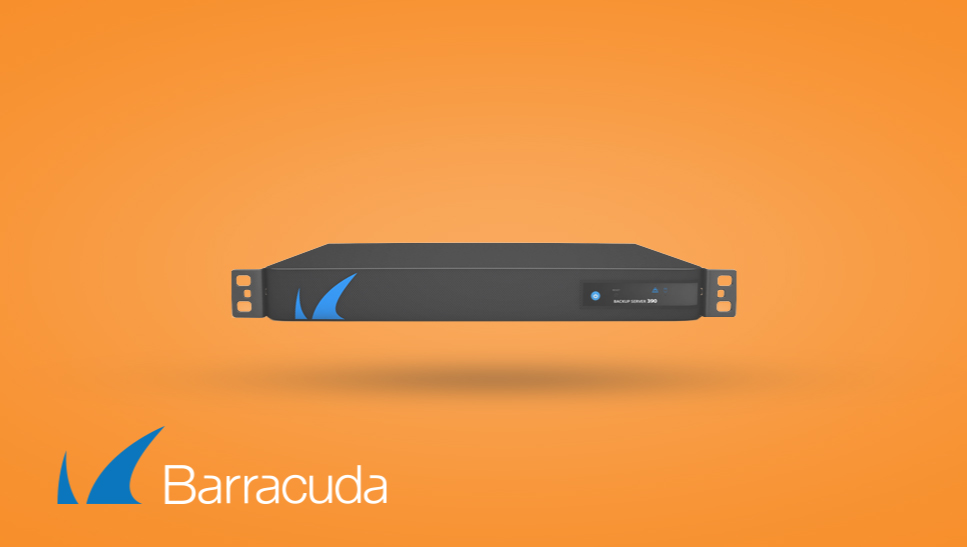Neglecting to develop a business plan for data backup and disaster recovery is a high stakes gamble that often doesn’t pay off. Likelihood of company’s success drops dramatically without access to important company data like financial records and account information. According to an article in Pacific Business News, “Of all businesses that close following a disaster, more than 43 percent never reopen. An additional 29 percent close permanently within two weeks.” [1] All of this can be prevented by implementing a reliable disaster recovery solution, like the Barracuda Backup Server.
Data loss can occur for any number of reasons that can’t necessarily be prevented, even with the best planning. An estimated 6 percent of all PCs will suffer at least one episode of data loss per year and 20 percent of laptops will suffer hardware related data loss in their first three years of use. A CSI/FBI survey revealed that 52 percent of respondents discovered unauthorized access to their systems, and 47 percent had experienced laptop theft.[2] The increasing number of business directed threats such as viruses and hackers, on top of physical business disasters such as fire or burglary, mean that the only effective way to prepare for data loss is with a reliable disaster recovery solution that has the flexibility to allow for offsite replication.
The increase in readily available high-bandwidth internet connections has increased the range of options for offsite backup solutions. Prior to offsite replication system administrators would backup to portable media and walk these backups offsite or pay for a service to vault the media. There are obvious problems associated with archiving to portable media such as losing or having the media stolen, as well as having to rely on someone to remember to physically cycle media and manage backup sets.
Having established that the best way to prepare for data disaster recovery is to have replication of your local backups to offsite storage it’s important to look at the way that offsite data is stored. When the Barracuda Backup Server is installed and configured, it will perform an initial backup of all selected data and store it locally. An advanced digital cataloging system shreds data into small pieces and tracks the changes of these parts over time to make sure duplicate data is not being retained. This deduplication helps minimize storage and bandwidth costs as it prepares to send data offsite.
To create an offsite copy of critical data, the Barracuda Backup Service sends data, to one of two secure data centers via the Internet using an encrypted IP tunnel. Before data is transmitted, those shredded and cataloged parts are symmetrically encrypted (AES256 bit) then compressed for transfer and remote storage efficiency. The symmetric key to unlock those parts is in turn asymmetrically encrypted (RSA1024 bit). The United States Government has approved 192-bit AES encryption as an acceptable method for protecting Top Secret information. Not only does the Barracuda Backup Service encryption method exceed that specification, but across the Internet, data is protected by three separate encryption algorithms two layers deep.
The last copy is created when replication occurs between the two data centers. All data is mirrored from one to the other and can be accessed from either. Barracuda Networks distributes data for each customer across two geographically dispersed data centers to minimize the potential impact of an event at either location. Each data center is highly secure including alarms, controlled access, fire suppressors, redundant bandwidth, and emergency power generators – everything necessary to ensure valuable data is not in danger.[3]
The Barracuda Backup service was designed with recovery in mind. Administrators manage the device through a Web interface. Because all critical data is kept offsite and administrative instructions are sent from the Web interface down to the Backup server, nothing critical is lost if the server is damaged. Barracuda Networks provides a number of tools and protocols to access and restore data either from the local box or from the cloud. This includes the Web interface, the Barracuda Restore Tool, WebDAV, and even FTP. A business can begin restoring data from the cloud as soon as it has connectivity. In the event that local backup server is a total loss, and there is a significant amount of data that needs to be restored quickly, Barracuda Networks Technical Support can load data on a hard drive or a replacement Barracuda Backup Server and ship it.[4]
Traditional backup solutions are typically sold based on complicated licensing structures that don’t scale easily and don’t provide a complete solution opting instead to charge for additional features or per server licensing. The Barracuda Backup Server is purpose built backup appliance designed as an out of the box solution with unlimited software licensing, without features hidden behind pay walls. It offers superior replication and deduplication options to many other leading backup solution vendors as well as offering excellent backup automation to a secure cloud with cloud-based LiveBoot options to expedite server recovery and reduce downtime.
With the increased reliance on data in modern business a secure, reliable backup solution is a requirement for all SMBs. Planning for disaster recovery shouldn’t be a difficult process. With solutions like the Barracuda Backup Server you can have a fully operating solution configured and protecting your data in under an hour.
[1] http://www.bizjournals.com/pacific/stories/2004/04/26/focus6.html
[2] 2006 CSI/FBI Computer Crime and Security Survey, Computer Security Institute/Federal Bureau of Investigation.
[3] Barracuda Networks, “The Value of offsite Storage”
[4] Barracuda Networks, “The Value of offsite Storage”

